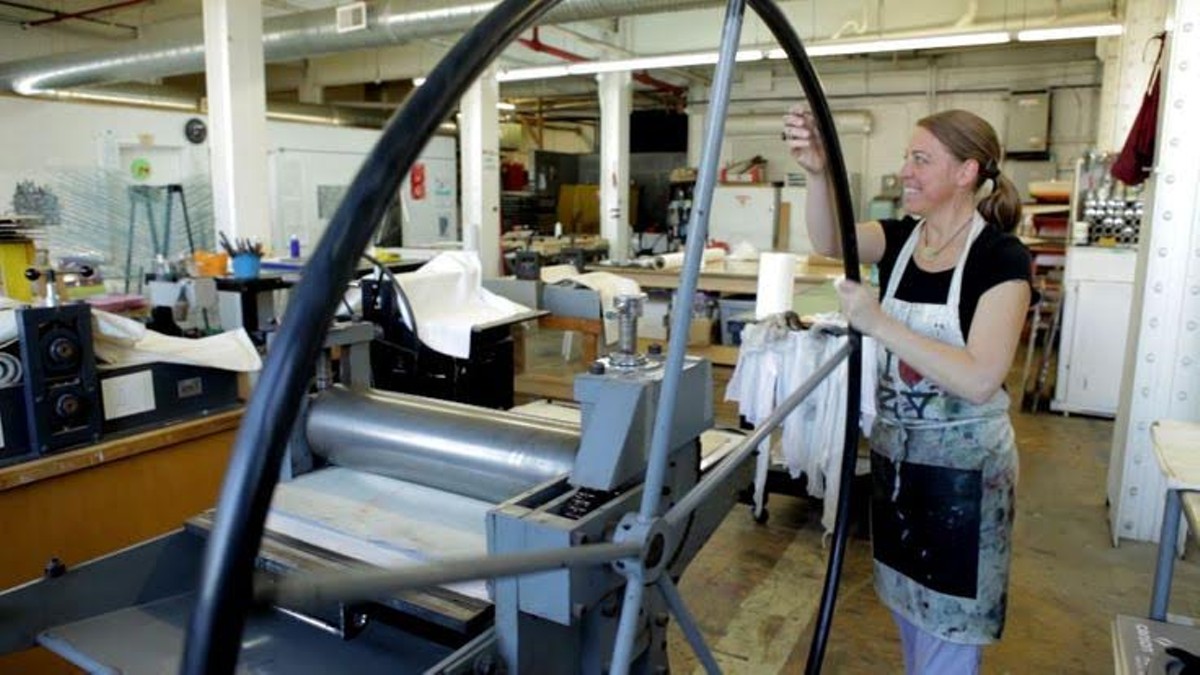If you're a non-smoker who's opposed to the county tax on cigarettes for the arts, chances are you're somewhat morally indignant about the major cultural institutions that stand as the tax' beneficiaries: the Cleveland Orchestra, for instance, which, since 2007, has received more than $15 million from smokers in the county. You may roll your eyes at Playhouse Square or the Cleveland Museum of Art, which have received about $13 million and $12 million, respectively, over the same period. You might sneer at the premier arts schools in University Circle — the Institute of Art and the Institute of Music — both of which have received more than $6 million since 2007. You might even gesture ironically toward the Rock and Roll Hall of Fame, which is doing A-OK on its own but has nonetheless received awards totaling nearly $8 million since 2007.
But if you ask some of the smaller arts organizations that receive funding from the tax, all that money awarded to big institutions isn't indicative of inequity in the process.
"It's a real point of confusion and contention" says Liz Maugans, founder and director of Zygote Press. "People think this money is lining the pockets of executive directors."
In reality, Maugans says, there's an extremely thorough adjudication process.
"It's like getting a scope," Maugans says. "You're committing to about 50 hours. But a lot of these organizations take a lot of time because they know how important this is. They know it merits this type of scrutiny because it is public money."
An outside jury rates organizations that apply for funding, and then money is disbursed based on a cumulative score that measures objectives and programming and is scaled to the individual organization's budget.
"They're measuring things like our reach into the community, whether our programming is free and accessible to the public, our partnerships, our fiscal trajectory," Maugans says.
Zygote, a collaborative workshop and printing house described by Maugans as a "small, grassrootsy arts organization with an energetic staff" has received the highest score countywide for two funding cycles in a row. Still, according to Cuyahoga Arts & Culture documents, Zygote has received just $130,566 since 2007.
Is that adequate?
Maugans says absolutely. The first year Zygote applied for CAC money, they received $5,000 more than they'd anticipated, and Maugans says that for an organization with a total budget of $350,000, the extra money is huge for its bottom line. Among other things, it helps them pay employees a living wage and helps facilitate projects that bring arts programming to Cleveland neighborhoods.
Bringing the arts into Cleveland neighborhoods is important, and it distinguishes the CAC funding from the stadium Sin Tax, at least according to Maugans. Not only does the funding make artists feel relevant — things like the Creative Workforce Fellowship, which Maugans has won, are "huge incentives" — it actually improves communities by giving money to organizations that work there: organizations like the Broadway School of Music in Slavic Village, Karamu House in Fairfax, and the Rainey Institute on the border of Hough and Superior / St. Clair.
The Rainey Institute is a community organization that hosts summer camps and afterschool programs in the visual and performing arts for youth.
"Cuyahoga Arts & Culture is very important to us," says executive director Lee Lazar. "It has provided significant, long-term funding which has helped us to grow humongously in the last eight years, to increase the number of kids we serve from 400 to more than 1,600 today."
Rainey, which has a long history on the east side — Eleanor B. Rainey founded the organization in 1904 as a settlement house for Eastern European immigrants — has received more than $400,000 in grants through the tax.
One of the unique programs that Lazar says the cigarette tax has helped make possible is El Sistema, a youth orchestral music program that came from Venezuela. Currently, 75 kids participate in the after-school program that provides instruments and instruction from the Cleveland Orchestra.
"They're going to be performing in a couple of weeks at the Cleveland Museum of Art," Lazar tells Scene. "And on MLK Day, they'll be performing on stage at Severance Hall."
Lazar, like Maugans, disputes the notion that too much of the tax goes toward big, powerful arts organizations. He says that Cuyahoga Arts & Culture has been "wonderfully helpful" in dealing with smaller organizations that might not have, for example, a development team or full-time grant writers on staff.
Lazar is proud to mention that over the past two funding cycles, the Rainey Institute has been given the second and third highest scores, respectively, for general operating support.
The reason for its success?
"We're focused on serving the community," Lazar says. "We have a strong sense of community purpose."
But some residents still take great exception to the regressive cigarette tax. Lazar says he certainly hears "a little bit" of opposition, "but I think once people truly understand that the tax benefits arts and culture organizations of all sizes, they then understand the importance."
All sizes also means all ages. And indeed, some of the organizations that receive funding you've probably never heard of, like the TOPS Swing Band, a classic big-band orchestra "for seniors, by seniors." The average age of the TOPS Swing Band's members: 74.
The $9,000 that TOPS (the Tough Old ProS) receives through CAC represents anywhere from 15 to 20 percent of the group's budget, says one of the group's directors and vocalists Larry "Patch" Paciorek. He says that money is used for things like musical arrangements, equipment, transportation and even postage.
"In some cases," Paciorek tells Scene, "our music motivates people to tap their feet or sing along, while others may have tears in their eyes when sung to, perhaps relating to special memories ... The most rewarding part of what we do is the heartwarming feeling that comes over you when you're a part of this motivation. We feel, and are told, that we project a motivational value that triggers a desire in some of these seniors to be more active and productive which could bring more joy to their lives."
The TOPS Swing Band performed at the Senior Games when they came to Cleveland in 2013 and was, Paciorek is pleased to point out, the very first swing band to perform in the Cleveland Convention Center.











